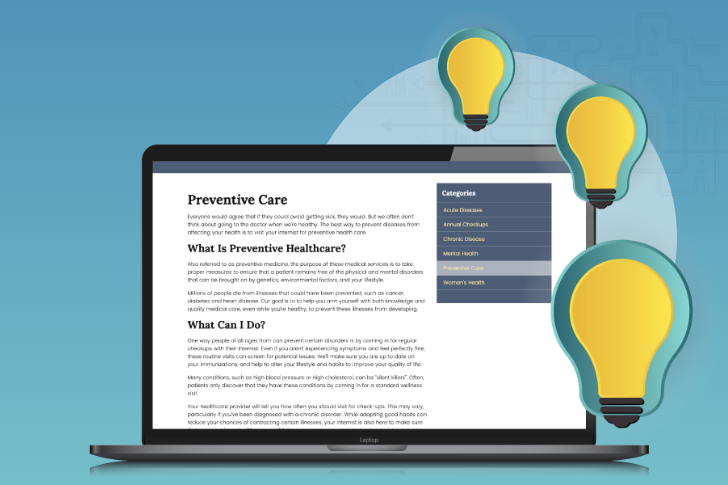What Makes a Professional Website Design?
Your website is the foundation of your online presence and often the first impression you make to potential patients.
Website designs continue to evolve for all businesses, including healthcare practices. It can be difficult to know which elements of web design you must follow on your practice website in order to present a professional and polished look online.
Here are the most important design trends our experts recommend following for 2018 and into 2019.
Visuals are the Best Way to Communicate
Humans are visually-oriented, and animations and illustrations are a great way to catch their eye. They’re also great at communicating relatively complex healthcare information to your patients.
Mobile Internet is the Most Popular Way to Access the Web
In today’s world, more and more patients are using smartphones to schedule appointments and access information about practices.
Your website must be mobile-responsive and adjust itself to fit any screen size or device. The days of building websites on a single platform or having a separate mobile version of your website are over.
Utilizing mobile-friendly website design is perhaps the most important thing you can do to keep your website current for 2019.
You Now Have to Be Seamless Across Many Technologies
The objective of your practice website is to generate web traffic, which can be achieved if a user likes to spend their time on those websites.
Patients use many technologies outside of your website to find information about your practice. This includes search results, online maps and directories, and even technologies like voice search to learn about your practice on the internet.
The quicker response a user gets wherever they search for you, the more satisfied they will be and the more likely they will be to schedule an appointment with your practice.
8 of the Most Important Questions You Have to Answer in 10 Seconds
Did you know that 55% of visitors spend less than 15 seconds on a website? Users decide whether or not you’re what they’re looking for in an almost unfairly short amount of time.
By making sure you answer their most important questions as quickly as possible, you can greatly increase the chances that they will stay on your website and not go somewhere else.
Here are eight specific questions every visitor wants answered within 10 seconds.
1. What Are You Selling?
For a healthcare practice, this might seem obvious, but a link to a services page that provides a clear list of what your practice offers is an excellent idea.
2. Why Should I Care?
Your patients will want to know how your practice can improve their lives and solve whatever pain points they’re experiencing.
In other words, what’s in it for them and why should they care?
3. What About Insurance?
Okay, you’ve piqued a visitor’s interest. Now they’re going to want information on whether or not they can cover your costs through their insurance provider.
While all the details might be too complex for your homepage, you should make sure that your visitors can find basic information with a single click.
4. What Differentiates You From Other Practices?
Many patients want to know a little about your practice’s history, team members, and values so they can get to know you before making an appointment.
5. Can I Navigate Your Site With Ease?
When it comes to navigation, it needs to be intuitive, and visitors should be able to get their bearings within a matter of seconds — not minutes.
The key with navigation is to keep it as simple as possible so that visitors can move their way seamlessly through your site without expending too much mental energy.
6. Who Else is Using It?
Patients want validation of a product/service before they spend their hard-earned money on it.
Reviews and testimonials are most important when it comes to building your online reputation and attracting new patients.
7. Can I Trust You?
Trust is huge, especially for healthcare professionals. But how can you gain their trust? As stated above, testimonials are great for letting patients know you’re the right practice for them.
8. How Can I Contact You?
This is simple but easy to overlook. You should make sure your practice contact info is clearly stated on your home page and on the bottom of every page in a footer section, not hidden on a “contact us” page or link.
Key Takeaways
-
Make sure that your website is easy to navigate and works smoothly across all devices and screen sizes. A website that is difficult to use on mobile devices may send patients elsewhere.
-
Patients will find your practice across many different places on the web outside of your website, so make sure they have consistent information about you everywhere they find you.
-
Answer the most important questions patients will have about your practice as quickly as possible (10 seconds or less). Patients make decisions about where to make an appointment very quickly, so you don’t want to make getting this information difficult.
Next Steps
Take a few minutes to look at your website through the eyes of a potential new patient. Does your website meet most of the criteria listed in this article?
If you’d like to make sure that your website is making the best first impression, contact Officite today.



